Thingiverse

Dean's Geodesic Dome and N-gon Pyramid Maker by M_G
by Thingiverse
Last crawled date: 3 years ago
As part of on-going collaboration with the Crawford School of Art and Design in the area of 3D printing we are producing parts to be used by, Dean O'Connor, a final year student in his work. Some pictures of the installed piece are included here.
Link to Dean's page on Crawford School of Art and Design's exhibitions website:http://crawfordexhibitions.com/exxit/?portfolio=dean-oconnor
Link to his Blog: http://deanoconnorartist.blogspot.com/
In this case we are making flat triangular shapes to be used to construct a large geodesic dome as part of a piece on the un-realised promises of utopian architecture (or so is my engineering brain's understanding of the piece). The piece will be translucent enough to allow internal projection of colours or images to show through to the outside surface. As part of illustrating the theme of unrealised utopian dwellings the piece will attempt to show the imperfections of manufacture and assembly that appear as a result of its imperfect creation. So that means we need to actually ensure some of the features and flaws possible with 3d printing (such as curling, build platform surface texture, bits of torn kapton stuck in the first layer, residual colours from other prints, honeycomb pattern, gaps, printed surface texture) are included or even accentuated in these pieces... which is an interesting an unusual request!
The photographs of all the triangles prepared were all printed on the same machine with the same white plastic. The different colours and tones come from various sources including: black marks drawn on the filament to ensure the filament is being drawn into the extruder correctly, pieces of different colour plastic being left on or falling onto the build platform and being incorporated into the print, Kapton tape unintentionally incorporated into the build, white ABS glue used to patch over small tears in the build platform, acetone and white ABS putty used to repair damaged pieces.
A simple geodesic dome can be made with triangles joined edge to edge. In this case 10 equilateral triangles and 30 isosceles triangles. The isosceles triangles form 6 pentagonal pyramids. The equilateral triangles fill in the gaps. The dome will be about 30cm (1 foot) in diameter.
To make it transparent enough to allow the projection to show through to the other side the parts will have to be very thin. The original idea was to use totally flat triangles of 2 or 3 layers thickness which could be assembled like paper craft models. However, these tended to bend when being removed from the build platform, curled up at the corners, were difficult to assemble and were not very strong once assembled!
The design was modified to include the following features:
mouse-ears at apexes to prevent curling
a thick rim around the edges to provide a large bonding area for strength when assembled and resist bending when removed from build platform
angled edges to make for easier assembly, with the angle chosen to ensure the edges meet at the correct angle for assembling pentagons
a triangular cutout giving a thin central region to enhance transparency
Expected print time on a Thing-o-matic is about 20 minutes per piece or 13 hours in total! O_O;
Link to Dean's page on Crawford School of Art and Design's exhibitions website:http://crawfordexhibitions.com/exxit/?portfolio=dean-oconnor
Link to his Blog: http://deanoconnorartist.blogspot.com/
In this case we are making flat triangular shapes to be used to construct a large geodesic dome as part of a piece on the un-realised promises of utopian architecture (or so is my engineering brain's understanding of the piece). The piece will be translucent enough to allow internal projection of colours or images to show through to the outside surface. As part of illustrating the theme of unrealised utopian dwellings the piece will attempt to show the imperfections of manufacture and assembly that appear as a result of its imperfect creation. So that means we need to actually ensure some of the features and flaws possible with 3d printing (such as curling, build platform surface texture, bits of torn kapton stuck in the first layer, residual colours from other prints, honeycomb pattern, gaps, printed surface texture) are included or even accentuated in these pieces... which is an interesting an unusual request!
The photographs of all the triangles prepared were all printed on the same machine with the same white plastic. The different colours and tones come from various sources including: black marks drawn on the filament to ensure the filament is being drawn into the extruder correctly, pieces of different colour plastic being left on or falling onto the build platform and being incorporated into the print, Kapton tape unintentionally incorporated into the build, white ABS glue used to patch over small tears in the build platform, acetone and white ABS putty used to repair damaged pieces.
A simple geodesic dome can be made with triangles joined edge to edge. In this case 10 equilateral triangles and 30 isosceles triangles. The isosceles triangles form 6 pentagonal pyramids. The equilateral triangles fill in the gaps. The dome will be about 30cm (1 foot) in diameter.
To make it transparent enough to allow the projection to show through to the other side the parts will have to be very thin. The original idea was to use totally flat triangles of 2 or 3 layers thickness which could be assembled like paper craft models. However, these tended to bend when being removed from the build platform, curled up at the corners, were difficult to assemble and were not very strong once assembled!
The design was modified to include the following features:
mouse-ears at apexes to prevent curling
a thick rim around the edges to provide a large bonding area for strength when assembled and resist bending when removed from build platform
angled edges to make for easier assembly, with the angle chosen to ensure the edges meet at the correct angle for assembling pentagons
a triangular cutout giving a thin central region to enhance transparency
Expected print time on a Thing-o-matic is about 20 minutes per piece or 13 hours in total! O_O;
Similar models
3dwarehouse
free

Geodesic dome
...geodesic dome
3dwarehouse
this is an even frequency geodesic dome model made up using equilateral and isosceles triangles.
grabcad
free

2V Geodesic Dome
...g on size.
found out dimensions and angles required for dome on http://www.domerama.com/calculators/2v-geodesic-dome-calculator/
thingiverse
free

geodesic dome by dav88
...s to give gripping surface.
just print as many as needed of the blue , green and red triangles, and the connectors. and assemble.
grabcad
free

Request: Geodesic Dome type 2V
...the assembly is that pentagon aab (comprised of five aab triangles) has to be symmetric, meaning that all edges lie in one plane.
3d_export
$5
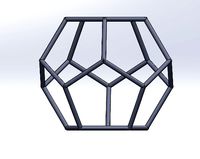
pentagon sphere
...n sphere
3dexport
it is a sphere with a pentagon structure. it is a variant of a triangle sphere which is used in geodesic dome.
3dwarehouse
free

Lobel Frame • 2-2-2-3 CSM
...ation is available at the equilatere website: lobel frames #dome #equilateral #equilatere #geodesic #lobel #lobel_frame #triangle
3dwarehouse
free

8x3+2x4side Rhombic Forms
...#regular #rhombi #rhombic #rhombic_dodecahedron #rhombus #standaard_forms #surfaces #symmetry #tessellations #triangle #triangles
thingiverse
free

Geodesic dome 1V Assembly type
...my other dome designs]
2v dome ...https://www.thingiverse.com/thing:3718636
3v dome ... https://www.thingiverse.com/thing:3737490
thingiverse
free

Geodesic Dome type 2V by ajw05001
...uggest support. printed semi-successfully without at ~50% scale. model constructed with measurements from domerama.com calculator
3dwarehouse
free

Dodecahedron Pentagon
...
dodecahedron, a 12 sided pentagon dome. shows angles to make it. by: steinie44 #12_sides #5_edges #dodecahedron #dome #pentagon
Dean
turbosquid
$15

Dean Armchair
...free 3d model dean armchair for download as max, obj, and fbx on turbosquid: 3d models for games, architecture, videos. (1161518)
turbosquid
$4

Dean Armchair
...free 3d model dean armchair for download as max, obj, and fbx on turbosquid: 3d models for games, architecture, videos. (1202304)
3ddd
$1

DEAN PROJECT penguins
... dean project , статуэтка , пингвин
+ max 2011
turbosquid
$6

Dean connectors
... available on turbo squid, the world's leading provider of digital 3d models for visualization, films, television, and games.
3ddd
$1

картины Dean Russo
...картины dean russo
3ddd
russo
собаки в стиле pop art от dean russo.
3ddd
free

American Leather Dean
...her dean в сложенном и разложенном виде.http://www.americanleather.com/comfort-theatre/comfort-theatre-styles/dean.aspx
3d_export
$8

dedon dean armchair
...dedon dean armchair
3dexport
3d_export
$5

DEAN PROJECT PENGUINS 3D Model
...dean project penguins 3d model
3dexport
dean project penguins
dean project penguins 3d model koskov.design 85865 3dexport
design_connected
$11

Dean Sculptural Table Lamp
...dean sculptural table lamp
designconnected
bradley dean sculptural table lamp computer generated 3d model.
turbosquid
$12

Chair By Deans Products1
...by deans products for download as c4d, obj, stl, 3ds, and fbx on turbosquid: 3d models for games, architecture, videos. (1623014)
Geodesic
3d_ocean
$4

geodesic dome
...geodesic dome
3docean
dome geodesic
geodesic dome with 3 holes
turbosquid
$99

Geodesic Sphere
... available on turbo squid, the world's leading provider of digital 3d models for visualization, films, television, and games.
3d_export
$39

geodesic domes
...ure works<br>the preview image is rendered using eevee rendering engine<br>no third-party renderer or plug-ins needed
3d_export
$44

geodesic domes
...ure works<br>the preview image is rendered using eevee rendering engine<br>no third-party renderer or plug-ins needed
3d_export
$39

geodesic domes
...ure works<br>the preview image is rendered using eevee rendering engine<br>no third-party renderer or plug-ins needed
3d_export
$50

Geodesic home 6M
...geodesic home 6m
3dexport
geodetic house. the diameter of the house is 6 meters. terrace 1.5 meters.
3ddd
$1

Geodesic Planter Flower
...geodesic planter flower
3ddd
this is new my model of our studio . view more model inhttp://redhome-visual.com/
3ddd
free

Geodesic Planter 2
...ic planter 2
3ddd
there is new our model . the geodesic_planter_2
can you view more model inhttp://redhome-visual.com/
3d_export
$18

geodesic dome
...nd the inner canvas. all separated in capable where they can be hidden independently. attached with .blend, .obj files. stl. fbx.
3d_export
$5

pentagon sphere
...variant of a triangle sphere which is used in geodesic ...
Gon
turbosquid
$10

Qui Gon Jinn
... 3d model qui gon jinn for download as max, 3ds, fbx, and obj on turbosquid: 3d models for games, architecture, videos. (1616950)
turbosquid
$15

Qui Gon Jinn's Lightsaber
...lightsaber for download as 3ds, obj, fbx, blend, dae, and stl on turbosquid: 3d models for games, architecture, videos. (1174421)
turbosquid
$15

NORDSK GEOMETRIC N-GON LIGHT 2017
...d model nordsk geometric n-gon light 2017 for download as max on turbosquid: 3d models for games, architecture, videos. (1184068)
3d_export
$10

Qui-Gon Jinn TPM lightsaber 3D Model
...pm starwars wars
qui-gon jinn tpm lightsaber 3d model download .c4d .max .obj .fbx .ma .lwo .3ds .3dm .stl boroda 108400 3dexport
3ddd
$1

The Placa Lamp by Gon&#231;alo Campos
...оставляющую конструкции. дизайнерское решение гонсало кампоса (gonçalo campos) является новаторским подходом к сочетанию
archive3d
free

Jedi 3D Model
...3d model archive3d jedi jedi master master jedi qui gon jinn - 3d model (*.gsm+*.3ds) for interior 3d...
3d_export
$8

low poly - stylized vehicles
...vehicles for every day. easy to change colors. no n-gon, only quads and tris. included files: blend, fbx, obj,...
3d_ocean
$15

Samsung Galaxy S5
...clean topology with only quads and few tris, without n-gon! uv...
3d_ocean
$9

Revolving Door
...all object and materials are named. clean geometry. no n-gon, overlapping faces or...
3d_export
$5

wardrobe-minh tri
...render: vray corona formats: 3ds max 2016, fbx https://noithatminhtri.com/san-pham/tu-quan-ao-go-cong-nghiep-cao-cap-nho-gon-q-31/ https://noithatminhtri.com/san-pham/tu-quan-ao-nho-gonq-32/ ...
Pyramid
3d_export
free

pyramid
...pyramid
3dexport
pyramid for you
3d_export
free

conical pyramid
...conical pyramid
3dexport
beautiful pyramid
turbosquid
$300

Pyramid
...id
royalty free 3d model pyramid for download as max and obj on turbosquid: 3d models for games, architecture, videos. (1578437)
3d_export
$5

Pyramid
...pyramid
3dexport
turbosquid
$3

Pyramid
...yalty free 3d model pyramid for download as 3ds, max, and obj on turbosquid: 3d models for games, architecture, videos. (1198985)
turbosquid
$2

Pyramid
...lty free 3d model pyramid for download as 3ds, fbx, and blend on turbosquid: 3d models for games, architecture, videos. (1273189)
3d_export
$5

pyramid-headed
...pyramid-headed
3dexport
unfinished version of the pyramid head
turbosquid
$5

Pyramid
...ree 3d model pyramid for download as 3ds, obj, fbx, and blend on turbosquid: 3d models for games, architecture, videos. (1188226)
turbosquid
$40

pyramid
... available on turbo squid, the world's leading provider of digital 3d models for visualization, films, television, and games.
turbosquid
$25

pyramids
... available on turbo squid, the world's leading provider of digital 3d models for visualization, films, television, and games.
Dome
archibase_planet
free

Dome
...dome
archibase planet
dome
dome n261107 - 3d model (*.gsm+*.3ds) for interior 3d visualization.
3d_ocean
$4

geodesic dome
...geodesic dome
3docean
dome geodesic
geodesic dome with 3 holes
3d_ocean
$5

event dome
...event dome
3docean
dome event spotlight truss
event dome complete with truss and spotlights.
turbosquid
$60

dome
...squid
royalty free 3d model dome for download as obj and fbx on turbosquid: 3d models for games, architecture, videos. (1670366)
3ddd
$1

moooi / domes
...moooi / domes
3ddd
domes , moooi
светильники moooi_domes
turbosquid
$99

dome
... available on turbo squid, the world's leading provider of digital 3d models for visualization, films, television, and games.
archive3d
free

Dome 3D Model
...e onion-shaped dome
dome church n311012 - 3d model (*.gsm+*.3ds) for exterior 3d visualization.
archive3d
free

Dome 3D Model
...dome 3d model
archive3d
dome arbor
archive3d
free

Dome 3D Model
...me 3d model
archive3d
dome
dome n261107 - 3d model (*.gsm+*.3ds) for interior 3d visualization.
design_connected
$18

Dome Light
...dome light
designconnected
moooi dome light pendant lights computer generated 3d model. designed by jameelah el-gahsjgari.
G
3ddd
free

G. Moscatelli
...алка
вешалка 25 / 26 / 27коллекция: belle heleneбренд: g. moscatelliстрана: италияразмеры: высота - 190 / 195; диаметр - 50 / 60.
3ddd
$1

G Plan Vintage
...g plan vintage
3ddd
винтаж , g plan
g plan vintage armchair
turbosquid
free

G protein
...otein
turbosquid
free 3d model g protein for download as c4d on turbosquid: 3d models for games, architecture, videos. (1309660)
turbosquid
$14

Fence G
...turbosquid
royalty free 3d model fence g for download as fbx on turbosquid: 3d models for games, architecture, videos. (1310122)
turbosquid
$7

G for Gun
...rbosquid
royalty free 3d model g for gun for download as max on turbosquid: 3d models for games, architecture, videos. (1685215)
turbosquid
$5

Letter G
...urbosquid
royalty free 3d model letter g for download as max on turbosquid: 3d models for games, architecture, videos. (1408463)
turbosquid
$5

Letter g
...urbosquid
royalty free 3d model letter g for download as max on turbosquid: 3d models for games, architecture, videos. (1408408)
turbosquid
$5

G Ring
...
turbosquid
royalty free 3d model g ring for download as stl on turbosquid: 3d models for games, architecture, videos. (1285079)
3ddd
$1

Infiniti / G-Chair
...infiniti / g-chair
3ddd
infiniti
www.infinitidesign.it/ita/g-chair.php
3ddd
$1
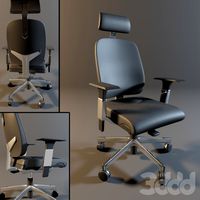
кресло G-68
...кресло g-68
3ddd
кресло
кресло руководителя g-68
N
3ddd
$1

KUTEK (N) N-ZW-3
...kutek (n) n-zw-3
3ddd
kutek
3d модель люстра (n) n-zw-3 фабрики kutek. в архиве: max2012, obj, fbx, mat.(два варианта металла)
3ddd
$1

KUTEK (N) N-ZW-2
...kutek (n) n-zw-2
3ddd
kutek
3d модель люстра (n) n-zw-2 фабрики kutek. в архиве: max2012, obj, fbx, mat.(два варианта металла)
3ddd
$1

KUTEK (N) N-ZW-5
...kutek (n) n-zw-5
3ddd
kutek
3d модель люстра (n) n-zw-5 фабрики kutek. в архиве: max2012, obj, fbx, mat.(два варианта металла)
3ddd
$1

KUTEK (N) N-ZW-6
...kutek (n) n-zw-6
3ddd
kutek
3d модель люстра (n) n-zw-6 фабрики kutek. в архиве: max2012, obj, fbx, mat.(два варианта металла)
3ddd
$1

KUTEK (N) N-K-2-A
...3ddd
kutek
3d модель бра (n) n-k-2-a фабрики kutek. в архиве: max2012, obj, fbx, mat. (2 варианта металла и 5 вариантов абажуров)
3ddd
$1

KUTEK (N) N-ZW-3-A
...
kutek
3d модель люстра (n) n-zw-3-a фабрики kutek. в архиве: max2012, obj, fbx, mat. (2 варианта металла и 5 вариантов абажуров)
3ddd
$1

KUTEK (N) N-K-1-A
...3ddd
kutek
3d модель бра (n) n-k-1-a фабрики kutek. в архиве: max2012, obj, fbx, mat. (2 варианта металла и 5 вариантов абажуров)
design_connected
$16

N°215
...n°215
designconnected
dcw éditions n°215 computer generated 3d model. designed by gras, bernard-albin.
turbosquid
$8

N for Nose
...bosquid
royalty free 3d model n for nose for download as max on turbosquid: 3d models for games, architecture, videos. (1693062)
turbosquid
$5

Letter N
...urbosquid
royalty free 3d model letter n for download as max on turbosquid: 3d models for games, architecture, videos. (1408490)
M
turbosquid
$20
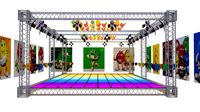
Stage M&M
... available on turbo squid, the world's leading provider of digital 3d models for visualization, films, television, and games.
3ddd
$1

bag m&m's
...bag m&m's
3ddd
bag m&m's
bag m&m;'s
3d_export
$35
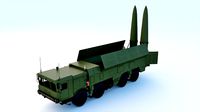
iskander m
...iskander m
3dexport
iskander m 3d model
design_connected
$7
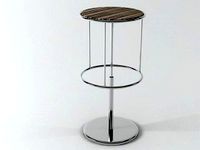
barstool m
...barstool m
designconnected
barstool m computer generated 3d model.
3ddd
free
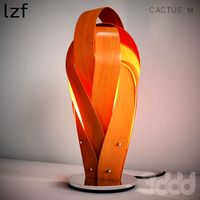
CACTUS M
...cactus m
3ddd
cactus , lzf
настольный светильник cactus m
производитель lzf
design_connected
$13
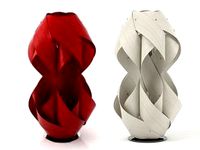
Anfora M
...anfora m
designconnected
lzf anfora m computer generated 3d model. designed by herranz, miguel.
3ddd
$1
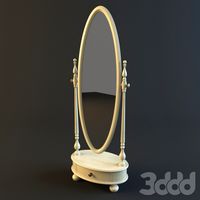
зеркало M Gastone
...зеркало m gastone
3ddd
зеркало m gastone
зеркало m gastone
design_connected
$16

Dogon M
...dogon m
designconnected
emmemobili dogon m chairs computer generated 3d model. designed by ferruccio laviani.
design_connected
$9
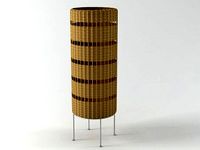
Sunlight M
...sunlight m
designconnected
bonacina pierantonio sunlight m computer generated 3d model. designed by bizzozzero, franco.
3ddd
$1
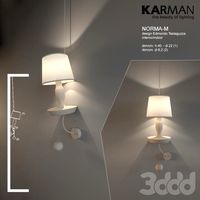
Karman / Norma-M
...arman , norma-m
http://www.karmanitalia.it/en/prodotto/norma-m/norma-m-ap640n/
Maker
3d_ocean
$17
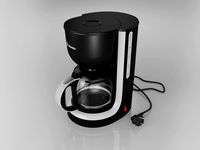
Coffee Maker
...coffee maker
3docean
breakfast coffee drip electric maker morning
detailed coffee maker and a plug.
3ddd
$1

coffee maker
...coffee maker
3ddd
кофемашина
coffee maker
3d_export
$10
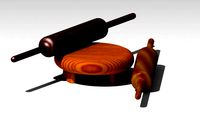
chapati maker
...chapati maker
3dexport
it is a indian traditional chapati maker
archibase_planet
free

Coffee maker
...aker
archibase planet
percolator coffee-machine coffee maker
coffee maker - 3d model (*.gsm+*.3ds) for interior 3d visualization.
archibase_planet
free
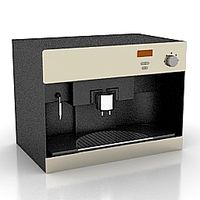
Coffee maker
...aker
archibase planet
percolator coffee-machine coffee maker
coffee maker - 3d model (*.gsm+*.3ds) for interior 3d visualization.
archibase_planet
free

Coffee maker
...aker
archibase planet
percolator coffee-machine coffee maker
coffee maker - 3d model (*.gsm+*.3ds) for interior 3d visualization.
archibase_planet
free

Сoffee maker
...er
archibase planet
coffee maker percolator coffee-machine
сoffee maker n020112 - 3d model (*.3ds) for interior 3d visualization.
archibase_planet
free
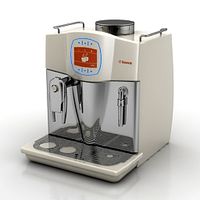
Coffee maker
...aker
archibase planet
coffee maker percolator coffee-machine
coffee maker - 3d model (*.gsm+*.3ds) for interior 3d visualization.
3ddd
$1

Juice Maker
...juice maker
3ddd
соковыжималка
fully detailed kenwood juice maker
archibase_planet
free

Coffee maker
...hibase planet
coffee maker percolator coffee-machine
coffee maker n140611 - 3d model (*.gsm+*.3ds) for interior 3d visualization.
